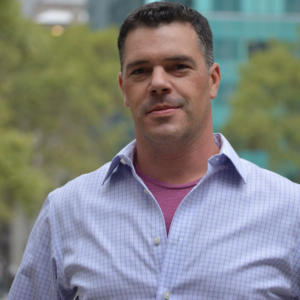
The end of the year is a time of reflection to evaluate where we’ve been and where we’re going. We would be remiss to discuss the tech hiring trends of 2022, without mentioning the extremely unique events of the previous two years. 2020 and the pandemic was a black swan occurrence. By necessity, companies transitioned to a remote-first culture and hiring, funding and growth slowed dramatically. The sudden pause on hiring created a recruiting backlog in technology.
2021 – The Hiring Boom Begins
In 2021, the world was calmer as we began to emerge from the pandemic. Companies noticed their employees were more productive working remotely than they were in the office. Due to forward-thinking leadership and advances in technology, people moved from big cities and were able to keep their positions. And then came the Boom…
With the hiring freeze lifted and the end of the pandemic on the horizon, companies began recruiting with an urgency we hadn’t seen in years. The market refreshed and funding and growth started to explode. This shifted the position of talent into the driver’s seat in the job market and changed the quality of hiring packages.
2022 – The Great Resignation & A “Talent Centric” Market
During Q1 and Q2 of 2022, the hiring frenzy continued. There was a steep demand for engineering candidates with the number of open positions significantly outpacing the talent pool. To combat competition, offers were enhanced with a salary increase by typically 20-30%, unlimited PTO and a commitment to remote-work. Candidates who weren’t even unhappy in their positions tested the job market knowing their value had skyrocketed and they could command more from their employers. Technical talent were securing higher paying jobs with more amenable conditions within one to two weeks of resigning from their previous positions.
Top-tier engineers have always known their worth. However, during these months mid to senior-level engineers began to see how valuable they are to prospective employees. It gave them the space to consider if their values aligned with the companies they worked for. If it wasn’t a match, they no longer had to stay, just to remain employed. They had the flexibility to ask the questions, “Am I looking for a mission-driven company?” “Do I want to live in a different state than my employer?” “Do I even want to still work in big tech?” “Perhaps now is the time to learn a new industry?” The possibilities were endless and it created a talent centric market.
The Slow Down & Return to the Office
Despite evidence that working remotely was a successful model, companies started abandoning the concept and requiring their employees to return to the office. Leases, teamwork and CEO mandates spurred the change, despite pushback from employees. Most candidates were required to work in the office three to four days a week and only a small segment remained completely virtual. Talent has mixed emotions over this change. Some have expressed enthusiasm to once again be in a collaborative environment. They’re eager to be face-to-face with clients and colleagues in a professional environment. While others say it’s no longer conducive after making major life changes, such as a permanent move.
With the steady rise of inflation, war in the Ukraine, uncertain political divides and volatility of the crypto market by the beginning of Q3, hiring began to slow down. Companies were only recruiting for critical roles or backfilling roles where they had lost talent to another company who had yet to move to a more conservative hiring approach. Offers were reduced by 10-20% from just a few months prior, funding decreased dramatically and there was a larger influx of talent. Thus candidates reconsidered their positions and were far less eager to make a transition. This shifted the hiring market back from candidate driven to company driven.
Recession & the Re-emergence of Uncertainty
Due to over-hiring for the past two years, tension in many environments and pressure on the global economy, companies reacted sharply with massive layoffs, hiring freezes and a pause on spending by the beginning of Q4. From startups to Fortune 50 companies, we have seen a significant change. With rumblings of an impending recession, we have returned to uncertain times.
With layoffs at some of the top organizations in the world, premier engineering talent has become available. The type of talent everyone wants to hire. Many organizations simply can not hire right now. The ones who can, have a major advantage with today’s exceptional talent pool. As candidates evaluate new offers, they are focusing on stability vs. high salaries.
What’s on the horizon in 2023?
Will this be a shallow recession? We certainly hope so. Key indicators are reflecting that it shouldn’t last terribly long, with prosperity naturally following it. When technology is core to your business, you can only afford to go so long without bringing in new talent before it starts to affect your product development and the business overall. So will we get out of this time of uncertainty? Of course! We always do. 2022 has been truly a roller coaster ride for us all. We wish you and yours a healthy and prosperous 2023! We look forward to connecting once again in the new year.


Create an Account or Sign In